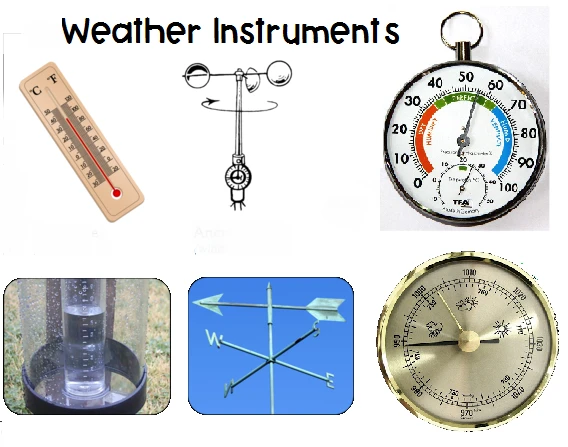
# Weather Instruments: Essential Tools for Accurate Forecasting
## Introduction to Weather Instruments
Weather instruments are crucial tools used by meteorologists, scientists, and weather enthusiasts to measure various atmospheric conditions. These devices help in collecting data that forms the foundation of weather forecasting, climate studies, and environmental monitoring. From simple thermometers to sophisticated radar systems, weather instruments come in various forms, each serving a specific purpose in atmospheric observation.
## Common Types of Weather Instruments
### Thermometers
Thermometers are perhaps the most familiar weather instruments, used to measure air temperature. Modern digital thermometers provide quick and accurate readings, while traditional mercury or alcohol thermometers remain reliable options.
### Barometers
Barometers measure atmospheric pressure, which is essential for predicting weather changes. A sudden drop in pressure often indicates approaching storms, while rising pressure suggests fair weather. There are two main types: mercury barometers and aneroid barometers.
### Anemometers
These instruments measure wind speed and direction. Cup anemometers with rotating cups are common, while more advanced versions use ultrasonic technology. Wind vanes, often paired with anemometers, indicate wind direction.
### Hygrometers
Hygrometers measure humidity levels in the air. Psychrometers, a type of hygrometer, use wet-bulb and dry-bulb thermometers to determine relative humidity through evaporation rates.
### Rain Gauges
Simple yet effective, rain gauges measure precipitation amounts. Standard models collect rainfall in a graduated cylinder, while more advanced tipping bucket gauges provide automated measurements.
## Advanced Weather Measurement Tools
### Weather Radars
Weather radars detect precipitation, its motion, and intensity. Doppler radar can also measure wind speed and direction, making it invaluable for severe weather warnings.
### Weather Satellites
Orbiting satellites provide comprehensive views of weather systems, cloud cover, and storm development across large areas. Geostationary satellites remain fixed over one location, while polar-orbiting satellites provide global coverage.
### Weather Balloons
Equipped with radiosondes, weather balloons collect upper-atmosphere data on temperature, humidity, pressure, and wind patterns as they ascend through the atmosphere.
## The Importance of Accurate Weather Instruments
Precise weather instruments are vital for:
– Improving forecast accuracy
– Early warning systems for severe weather
– Climate change research
– Aviation and marine safety
– Agricultural planning
– Energy production management
## Maintaining Weather Instruments
To ensure accurate measurements:
– Regularly calibrate instruments
– Keep sensors clean and free from obstructions
– Position instruments properly (e.g., thermometers in shaded areas)
– Protect electronic components from moisture
– Follow manufacturer maintenance guidelines
## Conclusion
Weather instruments form the backbone of meteorological science, transforming atmospheric observations into actionable data. As technology advances, these tools become more precise and sophisticated, enhancing our ability to understand and predict weather patterns. Whether for professional forecasting or personal interest, proper use and maintenance of weather instruments ensure reliable data collection for various applications.
Keyword: wether instruments